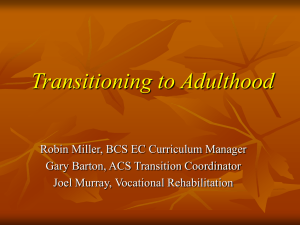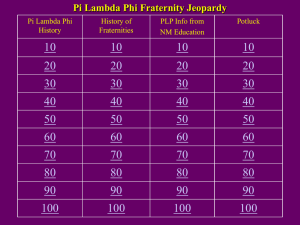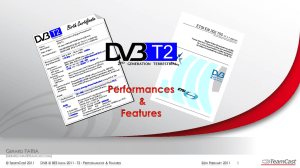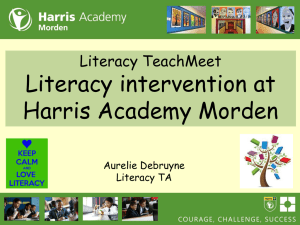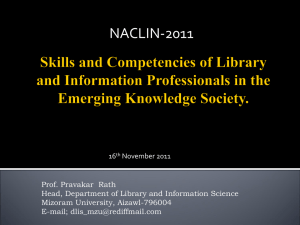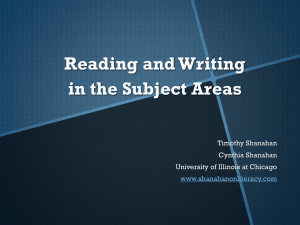A Personal Literacy Plan - Middletown School District
advertisement
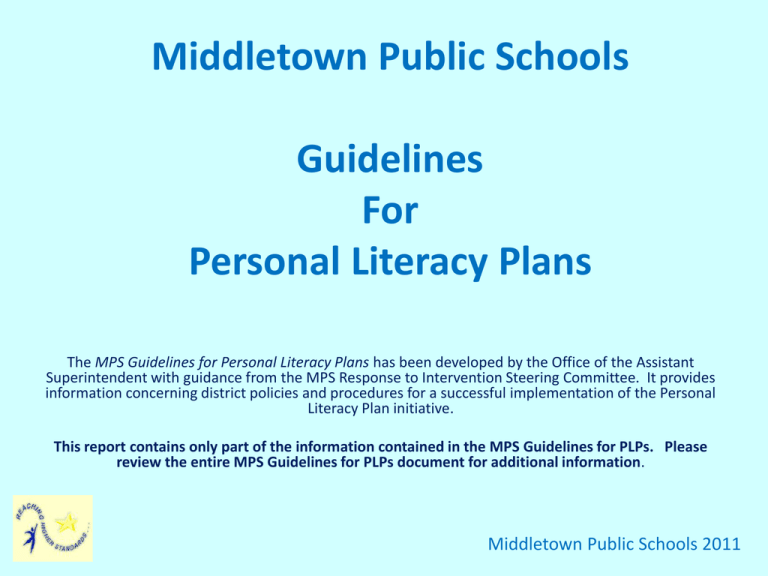
Middletown Public Schools Guidelines For Personal Literacy Plans The MPS Guidelines for Personal Literacy Plans has been developed by the Office of the Assistant Superintendent with guidance from the MPS Response to Intervention Steering Committee. It provides information concerning district policies and procedures for a successful implementation of the Personal Literacy Plan initiative. This report contains only part of the information contained in the MPS Guidelines for PLPs. Please review the entire MPS Guidelines for PLPs document for additional information. Middletown Public Schools 2011 Find additional information on our web site….. • MPS Literacy & PLP Web Site www.mpsri.net > District Programs >Student Services > Personal Literacy Program or http://www.mpsri.net/page.cfm?p=1306 • MPS PLP Guidelines Document (Iink available from the website above): http://www.mpsri.net/uploaded/documents/Distric t_Programs/student_services/plp/Middeltown_PLP _guidelines_2011_version4.pdf What is a Personal Literacy Plan (PLP)? A Personal Literacy Plan (PLP) – An individualized record of action describing instructional strategies and supports used to accelerate a student’s learning in order to move toward grade level reading proficiency. A PLP… • Is a plan of action for a teacher to use to bring a student to reading proficiency • Provides a problem-solving approach for improved student reading that is cyclical, inclusive (involving teachers, parents, administrators, etc.) and connects to the process of school improvement. • Ensures that all students will become proficient readers (i.e. reads and comprehends at least at grade level). • Provides a framework designed to meet the needs of an individual student, accelerating said student up to grade level. • Records intervention results that inform subsequent school personnel of successful instructional approaches. • Provides appropriate and focused instruction for struggling readers beyond the context of classroom instruction for all students. • Informs a district’s local assessment system that is aligned with GLEs/GSEs/Common Core. • Focuses on the improvement of students’ reading proficiencies as required by RI laws and regulations cited below. • Is not dependent on one specific model, program or assessment. What does the RI Department of Education Regulation say? The Rhode Island General Assembly and the Board of Regents imposed law and regulations to require a focused, concerted effort to improving the reading ability for all students not reading at grade level. To this end, RIDE has asked each District to report all students that are not reading on grade level on regular basis. What is the connection with RtI and PLPs? Universal Core Instruction (Tier One) • Interventions occur within the general design of the classroom and will be monitored using Personal Literacy Plans (PLP), Personal Math Plans (PMP), or Personal Behavior Plans (PBP). • Progress monitoring is done using a scientifically based practice and be supported by significant research. Most progress monitoring will be done using AIMSweb. Targeted & Intensive Instruction (Tier Two & Three) • Interventions will be monitored using Personal Literacy Plans (PLP), Personal Math Plans (PMP), or Personal Behavior Plans (PBP) unless the RtI PST determines Intervention Plan is needed. (Targeted or Intensive Level Only) • Non-responders with a PLP, PMP or PBP will be referred to the RtI /Problem Solving Team. Major Components of a PLP Intervention Additional, intensive, focused and appropriate instruction provided to students who are struggling with learning to read and write. Intervention Progress Monitoring Occurs frequently(weekly, bi-weekly, monthly) ~ the results of this type of progress monitoring inform instructional decisions The cycle of student support: • • • • • • • Diagnose, Analyze, and Validate Need (s) Design Intervention Plan Implement Intervention Review Progress Monitoring Data Revise/Modify Support Implement Revised/Modified Intervention Use Assessments to Determine Discontinuation or Need for New Intervention These five essential areas of reading instruction are: • • • • • Phonemic Awareness Phonics Fluency Vocabulary Text Comprehension Who needs a PLP? • All students in grades K-12 not reading at grade level need a PLP • All students with an Individual Education Plans (IEPs) who meet the criteria for a PLP will also need a PLP. • Reminder: the PLP Guidelines are the same for students with or without IEPs. • All English Language Learners (ELL) in grades K-12 not reading at grade level will have a PLP regardless of other factors which may include: – – – – Level of native language reading proficiency. Limited or interrupted formal schooling. Previous school experience. If they are enrolled for a cultural experience only. • All students who have an existing PLP from the previous year continue with a PLP until they are reading at grade level. (For example: Students who move from the elementary to secondary level continue with their PLP until they are reading at grade level.) Determining Who Needs PLP • The following tools should be used to determine the students that need a PLP: • NECAP State Assessment (scaled score of 40 or below) • Northwest Evaluation Association (NWEA) screening results (administered to all students) • Developmental Reading Assessment 2 (DRA2) • Flynt Cooter Reading Inventory • Qualitative Reading Inventory (QRI) • Students repeating a grade and not reading at grade level • Teacher concern View Appendix E of the MPS PLP Guidelines for additional information. • • • • • • • • • District Procedures for Personal Literacy Plans A child’s performance on the first administration of NWEA screening in September may identify areas which need the support of a PLP. At that time, a PLP addressing those challenges will be put into place by the PLP case manager. All students identified as below grade level in reading during the fall assessment screening must have a PLP by November 1st (Kindergarten by January 15th). Parents must be notified of this PLP. All PLPs are developed in the online system called TIEnet. Building principals and data clerks are notified by PLP case managers of students that are placed on a PLP. Students information is updated in SchoolMAX on ST295 (group 20) and SP240 (1510,1520 or 1521) by the building data clerk. TIEnet PLPs remain in draft status until June (unless a child is found to be reading on grade level and is released from the PLP prior to the end of the year). As interventions are implemented, the progress monitoring information is recorded on the Intervention Plan Progress Monitoring section of the PLP. At minimum of twice a year, a PLP progress monitoring update is provided for parents. In June, PLPs are finalized, printed and placed in a student PR folder. If a child has been released from the PLP process because they have reached proficiency, the release section on the PLP must be completed and the PLP should be finalized. Parents will be notified. This can take place at any time during the year. District Procedures for Personal Literacy Plans (continued) • • • • • Data from the PLP will be reported to Rhode Island Department of Education. This data will be exported directly from the PLP documents. All PLP documents must be kept up to date at all times for the reporting to take place regularly. A student that is not having success with the PLP process may be referred to the building level problem solving / response to intervention team by the PLP case manager. This referral should be made by completing the Student Data Sheet and Referral form. These forms will be found in TIEnet. If a student has an IEP based upon a reading goal then the student would not be referred to the problem solving team but the IEP team may need to be reconvened. Students that have an IEP may also have a PLP. PLPs are intended to provide short-term, tailored instructional interventions whose effectiveness is measured frequently and which are revised regularly based on students' responses. PLPs help focus the work of both general and special education teachers on interventions that should help students make progress toward their IEP objectives and annual goals. Students can be identified on their PLP as having an IEP, as long as it is listed among one of many student categories (For example: Title I, Literacy, Reading Recovery, 504 Plan, ELL, IEP, Speech). If this information were included on this document, just like any other student record, it would be considered and maintained as confidential in accordance with the Family Educational Rights and Privacy Act (FERPA) (20 U.S.C. § 1232g; 34 CFR Part 99). Children repeating a grade will most likely have a PLP from the previous year. In this case, the receiving case manager will continue the PLP process for that student. Responsibility for the PLP (Determining the PLP Case manager) Elementary (K-6) • Classroom teachers are responsible for the implementation/maintenance of PLPs. • When special education teachers participate in instruction, there should be collaboration between the two teachers. • The reading coach/specialist will provide support through interventions and progress monitoring for those students on their caseload. They will be responsible for documenting this information on the student’s PLP. • For students with disabilities who receive all their services in the area of literacy outside of the general education setting, special educators would be primarily responsible for developing and carrying out PLPs.(alternate assessment students). Secondary (7-12) • Reading Coaches/Specialist are responsible for the implementation and maintenance of PLPs. • When special education teachers participate in instruction, there should be collaboration between the two teachers. • For students with disabilities who receive all their services in the area of literacy outside of the general education setting, special educators would be primarily responsible for developing and carrying out PLPs.(alternate assessment students) Informing Parents • When it has been determined that a student needs a PLP, formally notify the student’s family by sending home the PLP notification letter. (Appendix F in MPS PLP Guidelines) • Contact parents at a minimum of twice a year to inform them of their child’s progress. The Intervention Plan Progress Monitoring page of the PLP should be shared with parents for reporting purposes and also when the intervention period is complete. • When it has been determined that a student no longer needs a PLP, formally notify the student’s family by sending home the PLP district letter. (Appendix G in MPS PLP Guidelines) Documentation The Personal Literacy Plan (in TIEnet) Managed by Case Manager and/or Literacy Coach – – – – Page 1 – Personal Literacy Plan Page 2 – Intervention Plan Page 2 Continued – Intervention Plan Progress Reporting Page 3 – Outcomes/Release Form Parent Letters (will be available in TIEnet) Managed by Case Manager and/or Literacy Coach – Informing Parents for PLP – Informing Parents of Release from PLP Data Management Case Manager notifies Building (Data) Clerk – SchoolMAX ST295 Group 20 – SchoolMAX SP240 Program 1510, 1520 or 1521 PLP Reporting Requirements • • • • State ID Local ID Student Last Name Participating Program Code – 1510 for grades K-5 – 1520 for grades 6-12 reading less than 1 year below – 1521 for grades 6-12 reading more than 1 year below • Program (PLP) Begin Date • Program (PLP) End Date • Program Exit Status – Completed – No longer enrolled in district – Moved from 1521 to 1520 References • Personal Literacy Plan Guidelines. (2005, June). Retrieved from Rhode Island Department of Education: http://www.ride.ri.gov/instruction/DOCS/documents/Personal%20Literacy%20Guidelin es%20Second%20Edition%20June%202005.pdf • Rhode Island PreK-12 Literacy Policy. (2005, December). Retrieved from Rhode Island Department of Education: http://www.ride.ri.gov/Instruction/DOCS/reading/RIReadingPolicy.pdf • K-12 LITERACY, RESTRUCTURING OF THE LEARNING ENVIRONMENT AT THE MIDDLE AND HIGH SCHOOL LEVELS, AND PROFICIENCY BASED GRADUATION REQUIREMENTS (PBGR) AT HIGH SCHOOLS. (2008, September 3). Retrieved from Rhode Island Board of Regents for Elementary & Secondary Education: http://www.ride.ri.gov/Regents/Docs/RegentsRegulations/HS%20Regulations%20Septe mber,%202008.pdf • Basic Education Program Regulations. (2009, June 4). Retrieved from Rhode Island Board of Regents for Elementary & Secondary Education: http://www.ride.ri.gov/Regents/Docs/RegentsRegulations/BEP_FINAL_070110.pdf
